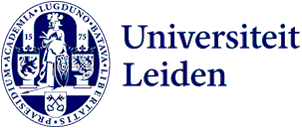
Exhibition: The untold Caribbean story
The Caribbean Ties exhibition at Oude UB aims to reveal the many unwritten stories of indigenous cultures and peoples of the Caribbean. It rewrites the early history of this region by focusing on the local perspective.
This local perspective is important, says Corinne Hofman, Professor of Caribbean Archaeology and one of the exhibition’s curators. ‘The historiography of the Caribbean and textbooks from the islands still centre the European colonial perspective. The stories of people who travelled with Christopher Columbus and sought legitimacy for colonising these territories on behalf of the Spanish crown predominate. These people had a very limited view of indigenous groups. They only saw “good or peaceful” and “bad and barbaric” indigenous people.’
Irvince Nanichi Auguiste, a member of the Kalinago community from the island of Dominica and since 1994 a research partner of Hofman’s in various archaeological and heritage projects, agrees: ‘When I was at school I learnt that indigenous Caribbeans were cannibals who ate the more “peaceful” indigenous Arowaks. And in 1992, the Smithsonian Museum in Washington D.C. even said that all indigenous peoples from the Caribbean had been completely eradicated by disease and contact with Europeans. According to that narrative I shouldn’t even exist.’
The exhibition is the product of the international Nexus 1492 ERC Synergy research project (2013-2019), which focuses on the impacts of colonial encounters on indigenous cultures and communities in the Caribbean. The exhibition is based on years of multi-disciplinary research in collaboration with Caribbean researchers, partner institutions and communities there.
Connect with schools
The exhibition not only contributes to different narratives about indigenous cultures and communities in the Caribbean but also forges links between these cultures and communities today. ‘The exhibition has been travelling around the Caribbean, Suriname and the Netherlands since 2019 and changes according to the venue and the community hosting it,’ says Auguiste. ‘The main message remains the same though, and it is this that has created active ties between the different Caribbean communities. The exhibition has led to the creation of the Caribbean Indigenous Heritage Association and plans are being made for a calendar with, for instance, important events for indigenous communities from the islands of Dominica and Saint Vincent.’
This edition of the exhibition at Oude UB also seeks to connect, for example with guided tours by archaeology students for children from primary and secondary schools in the Leiden area. ‘I took part in Meet the Professor on the recent Dies Natalis and saw for myself how much children enjoy learning about the Caribbean part of the Dutch Kingdom,’ says Hofman. ‘The moment you start talking about Sint Maarten and Curaçao the stories about holidays spent there or family living there come flooding out and they suddenly see for themselves the connections with and between these islands. We hope to achieve the same with the guided tours because here in the Netherlands too our knowledge of Caribbean history is too limited or is simply non-existent.’
The exhibition (free entry) is open on weekdays until 20 May and can be visited at Oude UB, Rapenburg 70, Leiden.


